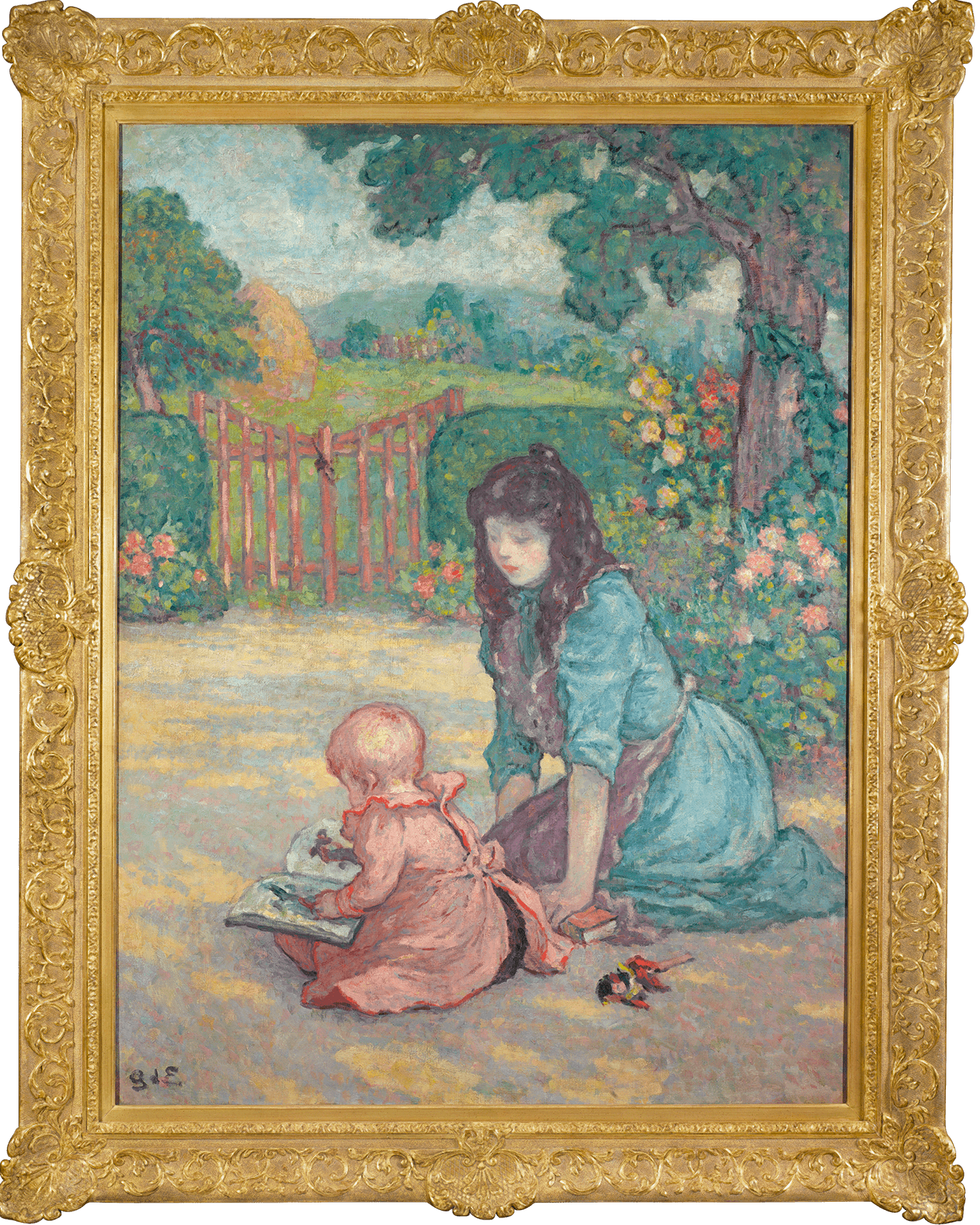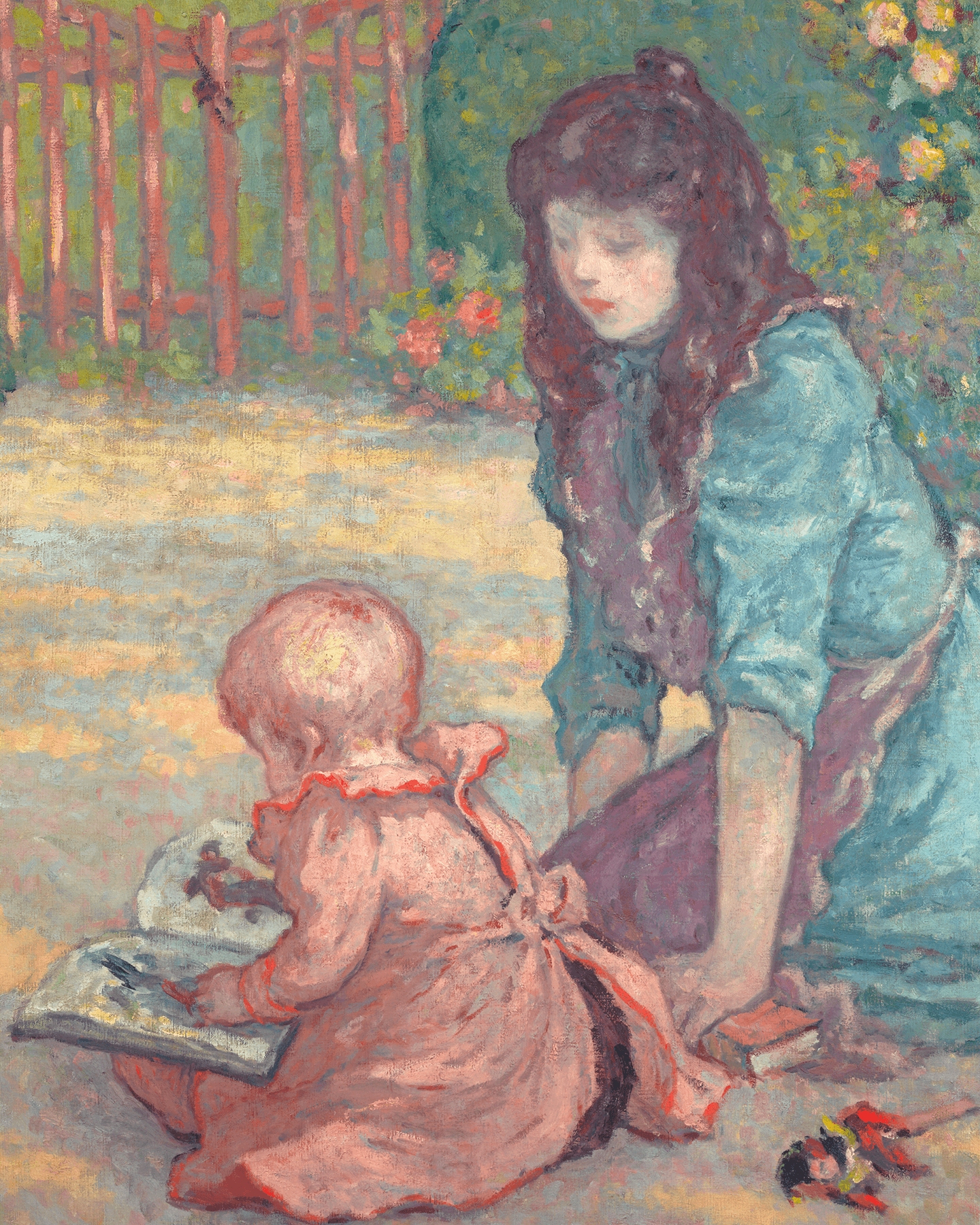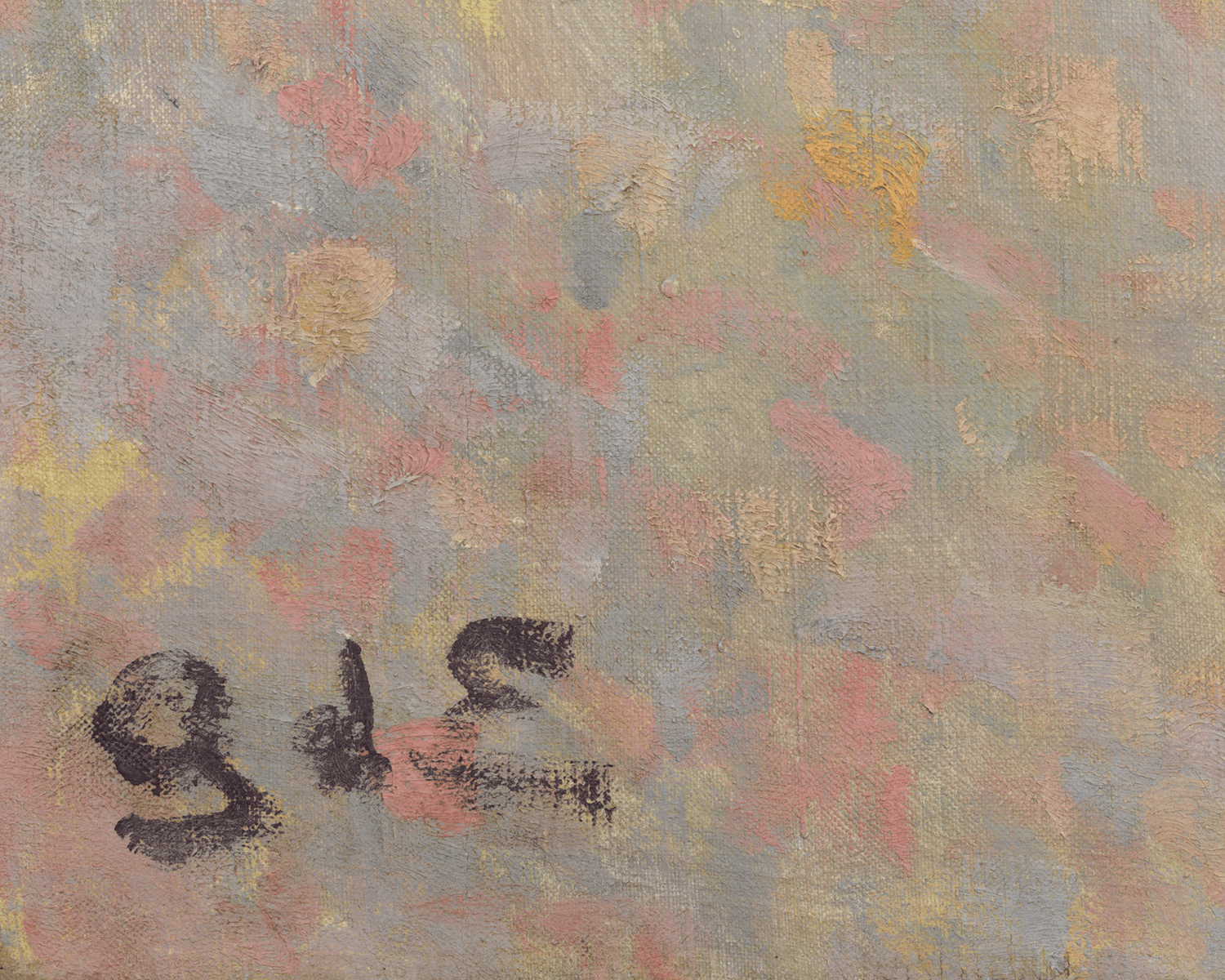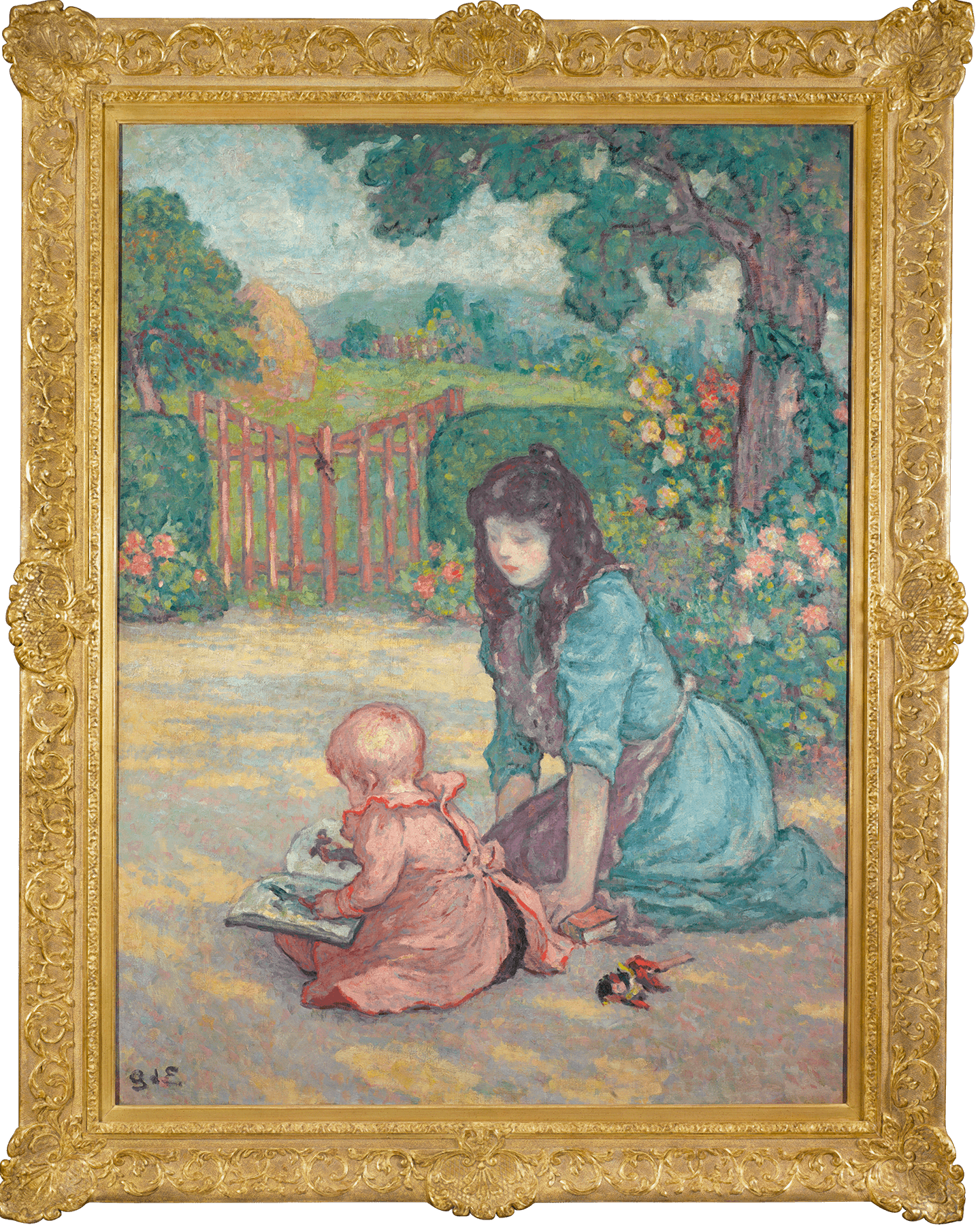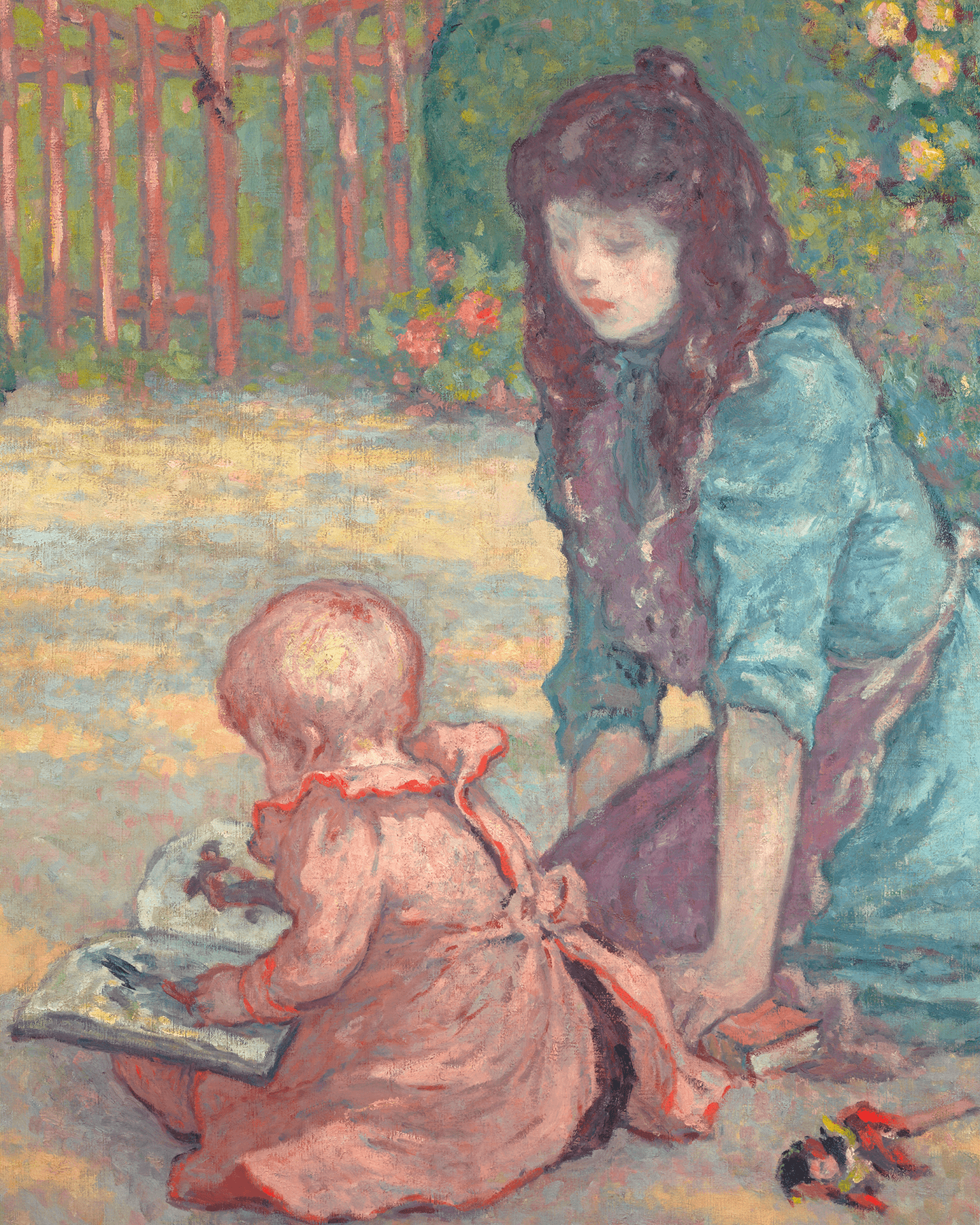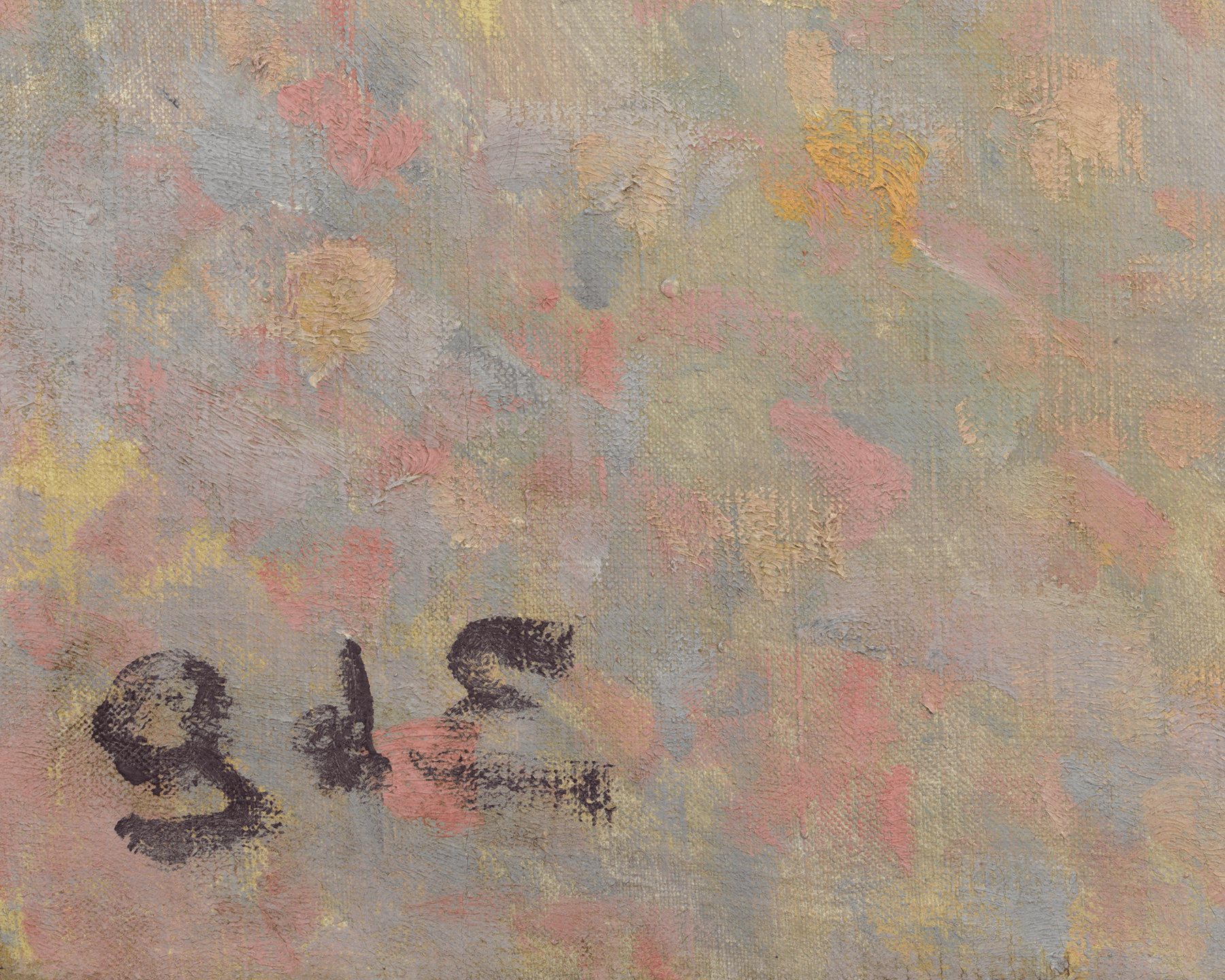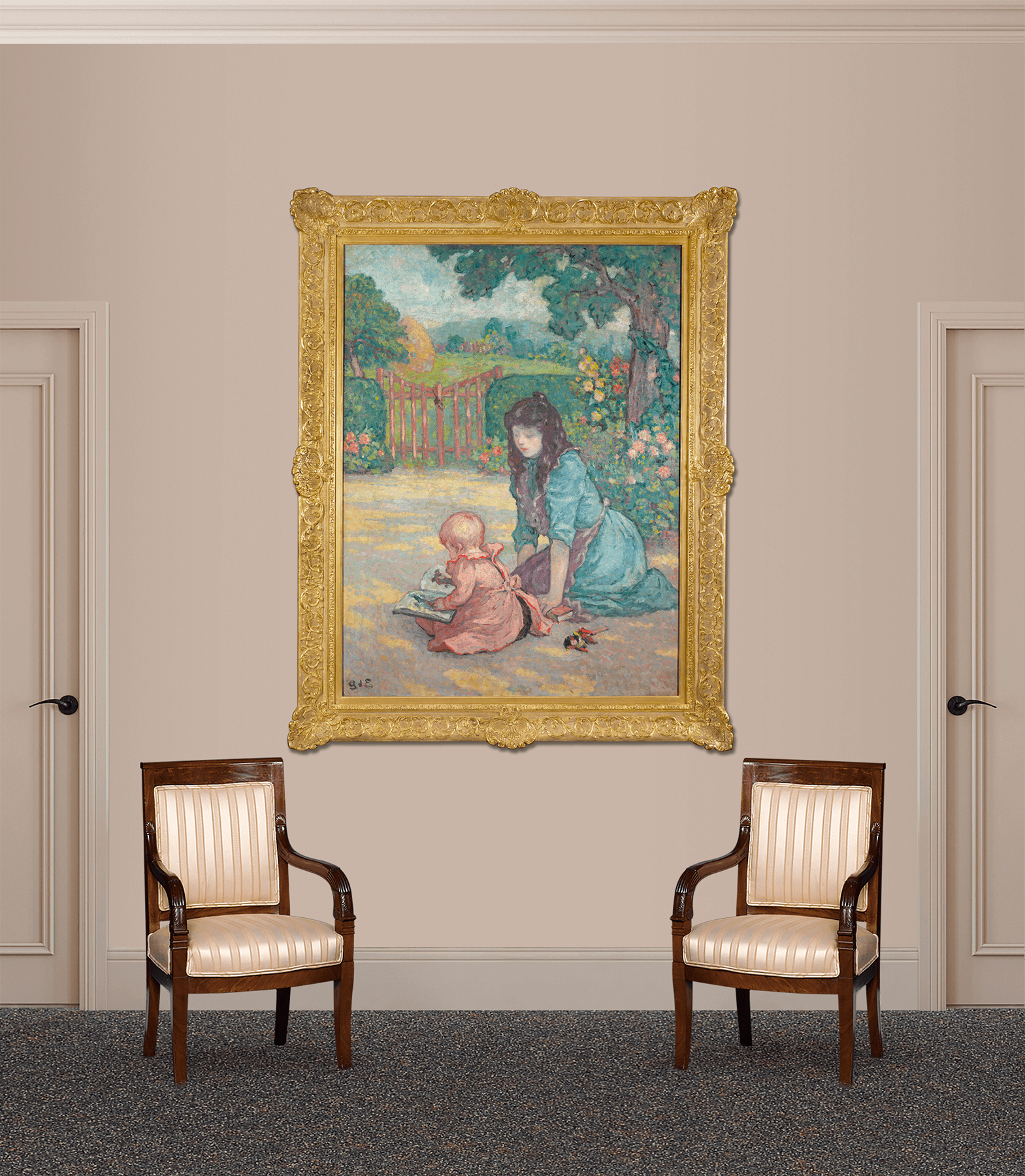M.S. Rau is committed to offering fine art of the highest caliber and we seek paintings and sculpture by historically renowned artists, often with impressive provenance. The large majority of our works of art come from private. . .
At M.S. Rau, we are committed to building a long-term, rewarding relationship with each and every client. That’s why your purchase is backed by our 125% guarantee.
Learn MoreLa lecture au jardin by Georges d'Espagnat
- French artist Georges d'Espagnat composed this charming original oil on canvas
- His two subjects are perfectly rendered in a studied use of complementary colors
- The loose brushstroke and vibrant color palette are hallmarks of his distinctive style
- A pioneer of the Post-Impressionist movement, d'Espagnat’s works are highly sought after
- Get complete item description here
To speak to one of our experts, call 1-888-711-8084
1870-1950 | French
La lecture au jardin
(Lesson in the Garden)
Signed “GdE” (lower left)
Oil on canvas
French Post-Impressionist painter Georges d’Espagnat captures a charming moment between a mother and her child in this vibrant oil on canvas. Rendered with a studied use of complementary colors and bold brushstrokes, the painting showcases the artist's unique Post-Impressionist style. Remembered as one of the most individualistic artists of the 20th century,. . .
1870-1950 | French
La lecture au jardin
(Lesson in the Garden)
Signed “GdE” (lower left)
Oil on canvas
French Post-Impressionist painter Georges d’Espagnat captures a charming moment between a mother and her child in this vibrant oil on canvas. Rendered with a studied use of complementary colors and bold brushstrokes, the painting showcases the artist's unique Post-Impressionist style. Remembered as one of the most individualistic artists of the 20th century, his distinctive canvases bring together the loose brushwork of the Impressionists and the bold color palette favored by the Fauves. Together, they achieve a vibrant spontaneity that lends itself well to the carefree subjects of the present work.
Masterfully composed, La lecture au jardin moves beyond the Impressionist instinct to capture a fleeting moment on canvas. Rather, d'Espagnat succeeds in creating a deep feeling of harmony in the work. Warm colors are perfectly balanced with cool tones, while vertical and horizontal lines are softened by the curves of the foliage and his subjects' figures. Through his simplification of forms and intentional use of color and line, he creates a scene that is carefully designed and thoroughly modern. A similar view of a mother and her child by d'Espagnat is currently in the collection of the Metropolitan Museum of Art (New York).
The Post-Impressionist painter was an individualist since his youth, choosing to forgo traditional schooling in order to independently study the Old Masters in the Louvre. He soon became involved with the most prominent Impressionist and Post-Impressionist painters of the age, including Pierre-Auguste Renoir and Paul Signac, who themselves existed outside the traditional norms of French Academic training. In 1891, he exhibited at the Salon des Refusés, and again the following year at the Salon des Indépendants.
By 1895, he held his first one-man show in Paris, and just three years later his success earned him a solo show at the prestigious Durand-Ruel Gallery. Between 1905 and 1910 he made several trips to visit Renoir on the Côte d’Azur. Their close friendship resulted in a group exhibition at Marcel Bernheim Gallery in 1907, which included the work of d'Espagnat and Renoir alongside Pierre Bonnard, Paul Cézanne, Henri Matisse, Camille Pissarro and other Impressionist and Post-Impressionist greats. It was during this period that he also extended his artistic reach into the realms of illustration and stage design. In 1906, he illustrated Remy de Gourmont’s popular book Sixtine, and later collaborated with Alphonse Daudet on his book L'Immortel. In 1914 he provided the decor for a production of Alfred de Musset’s play Fantasio at the Théâtre de Batignolles in Paris.
In 1920, after working in a camouflage unit during World War I, d’Espagnat bought a country house in the Quercy region, and over the next decade, he painted numerous landscapes and interiors there. Though disrupted by World War II, he continued to paint until his death in 1950.
Circa 1898
Canvas: 55 3/4" high x 42" wide
Frame: 68" high x 53 1/2" wide
References:
“Un Décorateur Nouveau: Georges d’Espagnat,” Art et Décoration, Vol. 6, 1899, by O. Maus, p. 122 (illustrated)
Provenance:
Dr. Georges Viau, Paris
Guarisco Gallery, Washington, D.C.
Private collection, U.S.
Private collection, U.K.
Guarisco Gallery, Washington, D.C.
M.S. Rau, New Orleans

| Maker: | D’Espagnat, Georges |
| Period: | 1816-1918 |
| Origin: | France |
| Type: | Paintings |
| Style: | Post-Impressionism |
| Depth: | 4.5 in. (11.43 cm) |
| Width: | 53.5 in. (135.89 cm) |
| Height: | 68.0 in. (172.72 cm) |
| Canvas Width: | 42.000 in. (106.68 cm) |
| Canvas Height: | 55.750 in. (141.61 cm) |
At M.S. Rau, we are committed to building a long-term, rewarding relationship with each and every client. That’s why your purchase is backed by our 125% guarantee.
Learn More
